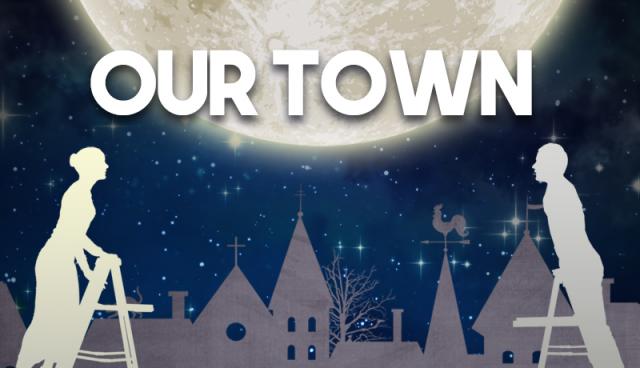
The Milwaukee Repertory Theater is no stranger to the classic Our Town, written in the 1930s by Madison, Wis.-born Thornton Wilder. This production is the fourth that the Milwaukee Rep has staged in its 64-year history.
It is worth noting that this American classic has been one of the two most-produced high school plays over the past eight decades. That’s a lot of theatrical clout, by any measure. Our Town also won the Pulitzer Prize for Drama (one of two such prizes given to Thornton Wilder). He also won a Pulitzer for his novel, “The Bridge of San Luis Ray.” In program notes about this production, director Brent Hazelton wanted to make Our Town into, literally, our town (i.e., Milwaukee). So, he hired many of the state’s best actors to assemble a cast of 31 (one of the largest in Milwaukee Rep history). Thankfully, the Rep’s largest of its three stages, the Quadracci Powerhouse, was up to the task. Hazelton also paid attention to the racial make-up of the city as well, casting black and Hispanic actors in key roles. The cast includes many prominent actors who would have had star billing in other shows. While these names may mean nothing to outsiders, it is quite a big deal locally to see veteran actors such as James Ridge (playing an alcoholic church organist); Carrie Hitchcock (as a university professor); and Johnathan Smoots (as the town undertaker). All the actors add new meaning to their roles, whether large or small.
The play takes place between 1901-1913, the eve of the Industrial Revolution. Grover’s Corners is a small, rural town, marked by a small number of shops, homes, farms and more than a few churches.
The Narrator who presides over the play is Laura Gordon, Milwaukee Rep associate artist and director for several companies around town. Wearing a three-piece, 19th-century suit, Gordon comments matter-of-factly on events unfolding before the audience. As a key player in this drama, one cannot imagine a better choice than the multi-faceted Gordon.
After her introductory speech, Gordon comments on the start of a new day in Grover’s Corners. As one may recall, a pair of twins just delivered at home by Dr. Gibbs (by turns, the stern and easygoing Chicke Johnson), the town’s lone doctor. The next minute Gordon notes the fate of a paper boy who hits the streets about the same time Dr. Gibbs is heading back to his own home. Her voice showing only hint of wistfulness, Gordon tells us he’ll die fighting in World War I. Life and death – the inevitable rhythm of life in Grover’s Corners, and everywhere else.
The cast is extremely focused on day-to-day activities, many of which they perform in mime. Few of them ever take time to sit down and share their hopes and dreams with each other. One exception is Dr. Gibbs’ wife (a matriarchal Elizabeth Ledo). Although she will dutifully traipse the battlefields of Antietam whenever Dr. Gibbs can get away for a bit, her heart’s desire is to visit Paris. However, without the consent and support of her husband, she fears that she’ll never see the Eiffel Tower (and she doesn’t). Instead, the money she was going to use for such a journey ends up in the hands of her newlywed son and his bride. Not surprisingly, the money stays right in Grover’s Corners, as the couple use it for practical improvements to a farm that they’ve been lucky enough to obtain from a relative.
Even the young seem to accept their fate, instead of breaking out into the world. As DiMonte Henning (as George) and Cher Desiree Alvarez (as Emily) plot the rest of their lives over a strawberry phosphate, there is only a momentary hesitation before they choose not to pursue their education beyond high school. This is a particularly odd choice for Emily, who scored high marks in school. (But she is not alone. As divulged earlier in the play, 90 percent of high school graduates eventually settle down in Grover’s Corners.) Like her neighbor, Mrs. Gibbs, she has learned not to make a fuss about any longings or desires beyond the boundaries of Grover’s Corners.
The play’s final act is dominated by an ingenious set design (sets of rolling staircases). As envisioned by set designer Scott Davis, these staircases of varying heights each hold a “resident” of the town’s cemetery. The latest addition, of course, is Emily. She has died in childbirth, and the act opens with her funeral. During the funeral service, the mourners sing Emily’s favorite hymn, “Blessed Be the Tie That Binds.” Again, Wilder is reminding us how family ties and traditions can smother ambition.
Although the world has changed tremendously since Wilder wrote his best-known play, the lessons told within it are worth revisiting. This production casts a vibrant, humorous and powerful spell that gives audiences a new appreciation for the community in which we live.
